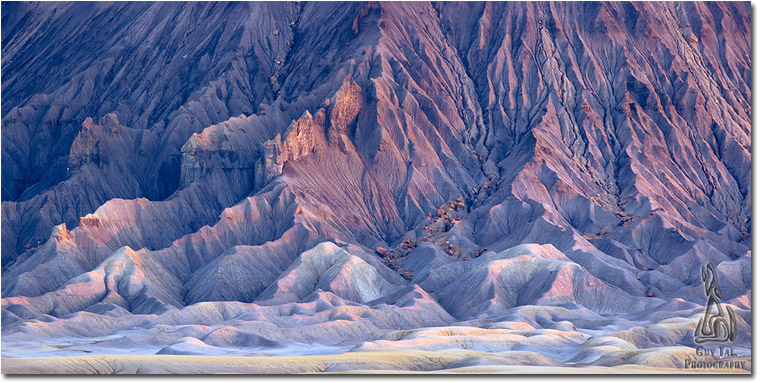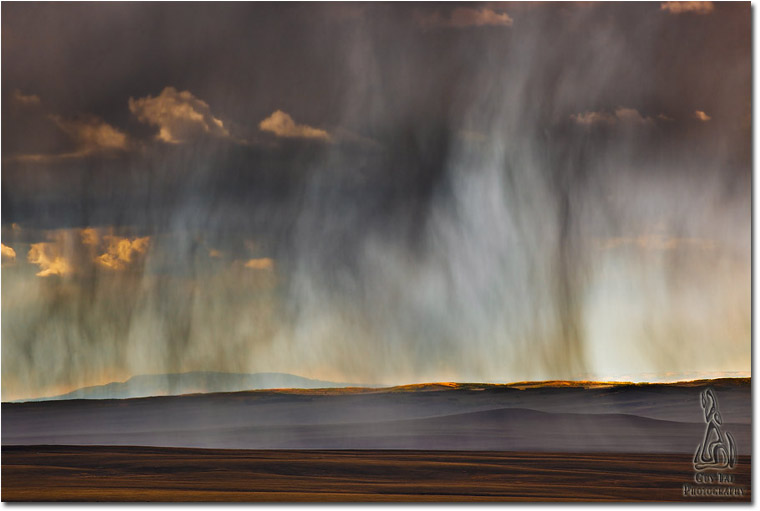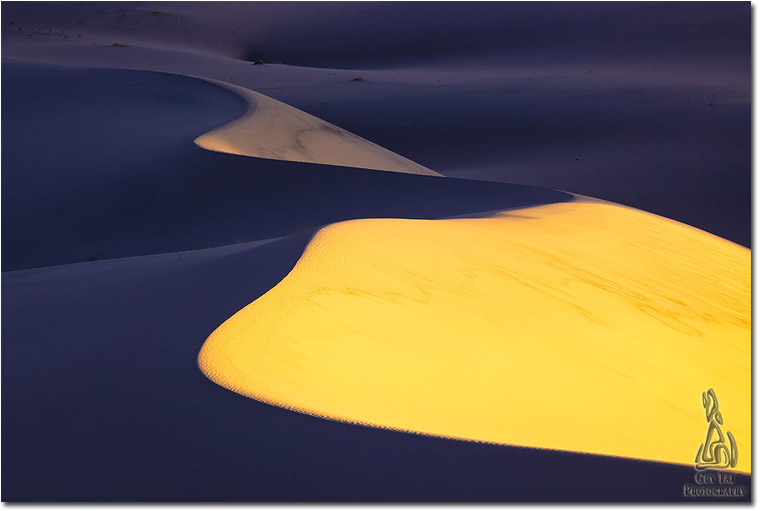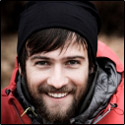I recently had the great honour of asking a few questions to one of the most renowned landscape photographers today, Guy Tal. If photography, writing, philosophy and the unconditional love for the natural world would fuse into a single artistic expression, than Guy would certainly be one of the most notable representatives. I hope you enjoy.
1. How did it all start for you? And how hard was to live the life of an artist given all the risks?
It’s hard to pinpoint where it started, but my passion for photography began as a teenager. I grew up in Israel at a time when the country still had a lot of open space and natural areas. Since my early childhood, I loved exploring the fields and orchards around my house, and one day I decided to borrow my dad’s old Minolta. I remember the joy of framing some of the interesting things I found, trying to decide what would make a good photograph. Since I knew nothing about exposure at that time, none of the images was usable, but I enjoyed the experience so much that I knew it was something I wanted to learn. I later saved some money to purchase a Nikon F3 and a couple of lenses, and the camera became a permanent companion on my excursions from then on. It still took about two decades before my interest in photography took a more artistic direction. After moving to the US in 1996, I began studying the works of American landscape photographers and fell in love with the Western landscape. I felt I needed to “say” something about it in my work – not just how objectively beautiful it is, but what it means to me, as someone who started a new life and chose these places for my home. Becoming a professional artist was not easy. I came from a successful career in Information Technology and spent a few years working in Silicon Valley. After a while, it became clear to me that the high pace and urban life did not fit me. My wife and I decided to move to Utah, which I always loved for its immense natural beauty. We spent ten years in Salt Lake City, where I worked as an IT manager for a large financial company. Towards the end, I knew that change was inevitable. I simply could not turn my creative side on and off, between work and time outdoors. When in the office, my mind would drift to other places until I finally decided to take the risk and make a career change. We moved to a tiny town surrounded by vast expanses of scenic lands and many miles away from any city. It was scary to let go of steady income and some of the comforts of city life, but what I gained in happiness, fulfillment, and inspiration is far greater than any sacrifice I had to make.
2. You’re a great photographer, but also a wonderful and sensitive writer who knows how to depict somehow elusive subjects. Knowing the hidden meanings behind our motivation to pursue this wonderful passion might not need to be explained, but I think a certain degree of understanding might help us become aware of what we’re capable of.
Thank you! The real revelation to me was coming to realize that photography was not just something I do independently of other things. The same creative drive that pushes me to make images is also what prompts me to write. In fact, everything that I do seems to converge around defining my own identity and the way I relate to the world around me. Writing and photography are just means of expressing my thoughts and feelings, the same as having a deep conversation or letting my thoughts drift. I don’t try to separate my “photographer identity” from my “writer identity” or any other. They are all parts of the same whole. More than that, I often find that the different things I do end up enhancing and influencing each other. By writing about what I see and feel, I can articulate it more clearly in images, and vice versa.

3. I see a very sensitive and intimate side in your way of seeing the world. That tells me a lot about the person behind the images. Good artists are good people, you say.
I would certainly like to believe that. In my mind, great art is a reflection of the artist’s way of perceiving reality and their place in it. In fact, I think it is actually the opposite that is truer: good people make good artists. I’m hardly perfect but I do strive to live up to my morals in everything that I do.
4. Many writers and musicians use their past experiences as sources of inspiration. Is this the case for landscape photographers too? I mean, many see beauty in our photos, a celebration of the natural world, but I think there is something hidden beneath the obvious, whether it’s something beautiful that resembles what we depict or something sad that maybe changed our lives forever.
I think it is true for any creative person. The best art is created out of intuition rather than consciously following a process; and intuition comes from who we are – the sum of our life experiences, beliefs, sensibilities, and temperament. Beauty can be objective, but art is always subjective. It doesn’t take much to make or record something that is beautiful, but in order for it to have an ulterior meaning beyond objective beauty, that meaning has to come from the artist.
5. Do you think there is a sort of loneliness of the artist when creating? Are we alone when “confronted” with our creations or rather with the possibility of creating something unique?
I think “solitude” may be a better way of describing it. Loneliness comes from missing the company of others. It is not usually a pleasant feeling. Solitude, on the other hand, is about taking a deliberate break from others and isolating your own inner voice. There is no denying that I do my best work alone. In many cases, those subtle nuances that can make or break a good image require heightened awareness, freedom from distractions, and allowing yourself to seek an emotional connection with the subject. All these things are easier for me to accomplish in solitude.
6. A prepared mind will be able to face the greatest of challenge. How would this apply to landscape photography? Do you think knowledge about mountain equipment, about the environment, a plan on how to approach the landscape, being able to act fast when conditions are changing, the ability to overcome a certain mind set in order to see differently, can be considered premises for a great image? Or it’s just a question of luck?
Indirectly, yes. To be fully engaged in creative work, you have to dedicate your faculties to the beautiful and joyous aspects of your experience and put other distractions and worries out of your mind. If you are uncomfortable in the landscape, or concerned about possible problems that you may not be equipped or skilled enough to tackle, you will not be able to fully immerse yourself in your work. Having confidence in your ability to move, eat, sleep, and work comfortably in your chosen environment will free you to concentrate on creative pursuits and allow for the mental and emotional space needed in order to explore, to notice subtleties, to slow down, to consider possibilities, etc. without constant worry or discomfort. Luck certainly plays a role in finding fortuitous circumstances, interesting feats of light, etc., but it is not an essential requirements. Just as important is your ability to respond and react when finding yourself in favorable conditions, and the skill to find creative opportunities in a variety of conditions. In my own work, I find that as long as there is something in the scene that touches me and that I can relate to, I will usually find a way to express it in an image without having to rely on extraordinary circumstances.

7. Galen Rowell once said: “When nature photography goes wholly digital, I’ve got a dream camera in mind that I’d use without ethical constraints. It will make three auto exposures in a split second for highlights, mid-tones and shadows, then render them into a single output.” Galen was a visionary in the field of landscape photography and I believe that he would have taken advantage of technology. Do you think a man like him could have changed the nowadays misconceptions related to image processing?
Certainly, Rowell’s notoriety could have been instrumental in educating the public. Still, there is no shortage of insightful photographers still working and teaching today who share similar views. In the days before color film, all images required processing, and nearly all processing was done manually, so some variation and interpretation was inevitable. This changed in the days of color film, when standardized processes rendered a consistent appearance dictated by the film’s emulsion. With digital photography, we have come full circle. Photographers again have the freedom to “develop” their raw files individually and adjust them to achieve the specific color and tonality they are after, rather than use those inherent in the film they happen to use. What many don’t fully acknowledge is that processing is not a matter of “if” but a matter of “how much.” Ansel Adams used the term “departure form reality” to describe the gap between his interpretation (through exposure and processing) and what a random person may have witnessed at the scene. Certainly, some uses for photography demand that such departures be as limited as possible, but there is no plausible reason to apply the same requirement to all types of photography. That would be like demanding that all writing be in the form of journalism and based on objective facts. Certainly some images may be the visual equivalent of a news report, but that doesn’t mean that others can’t be the equivalent of poems, novels, or even science fiction. Where factual objectivity is not the intended goal of the image, it really comes down to the artist’s expressive powers and good taste.
8. There is flow of information these days that most of us can’t simply keep pace with. And I guess it’s true for the world of photography too. How do we slow down and how do we take what’s best for us? Do we really need to slow down or rather adapt?
Slowing down is always a good practice when it comes to creative work. This is true for both for artist and for their audience. These days, information is more abundant and more available than ever before. No matter how hard you try, you will never see it all. Keep in mind, though, that if you overload yourself trying to consume as much as you can fit in a day, you will also be cheating yourself out of deriving the full benefit of the art experience. Good art has many facets, both obvious and subtle, and is most satisfying when created, studied, and explored with due time and attention. Being able to effectively filter content is an essential skill, but even just those things that may be relevant or interesting are enough to overwhelm anyone. Personally, I feel that if I am deeply moved by something I’ve seen, and if I experience something profound and meaningful, it doesn’t really matter whether I got there by studying a single image or a thousand images. As with many other things, I start with trusted friends and artists who inspire me or point me to others who inspire them. This had traditionally been the role of art critics, though in the era of Modern Art, critics specializing in expressive landscape work are not too common.
I don’t think the solution is to adapt. While it may seem the pragmatic thing to do, it is physically impossible. Our brains are limited in their capacity to closely study a large number of things with the same degree of conscious awareness and engagement as a single item. And to me, the joy of creating and studying art comes from nuances and complexities that cannot be fully appreciated without dedicating sufficient time, or in parallel with other conscious efforts.
9. Where do you think the ability of seeing beauty in chaos comes from? Does it take talent, does it take work? Which one is more important?
The word I like to use is “awareness”. Talent, to me, is a proclivity towards skilled labor – or craft – rather than emotional or creative pursuits. When it comes to appreciation of beauty, we are all equally endowed. The hurdle is in letting go of prejudice, cynicism, and distractions. In order to see it, you must first want to see it. There is certainly a degree of skill involved, though it is one that can be learned and practiced. A recent study I saw tracked the eye movements of artists and non-artists when studying a scene. While non-artists will instinctively gravitate towards the most obvious or “important” elements in the scene, artists’ eyes tend to scan and wander, establishing context and relationships rather than merely trying to ascertain what they are looking at. This too, requires slowing down. Still, when practiced sufficiently, it becomes natural and intuitive.
10. What is vision in landscape photography? Is it something that evolves, that grows based on previous experiences or is it something that comes strictly from our, let’s say ability, to convey something we feel with our senses and soul into a photograph that tells the story of what we felt at the time when we took it?
I think of vision as the passive act of processing visual information. In order to see creatively, though, a deliberate and proactive effort is needed, not only identifying what’s in front of your eyes, but also simultaneously imagining what it can look like and how it can be used in a photograph or other artistic creation. What your eyes see is just the external veneer. The stories come from you: your imagination, knowledge, emotions, beliefs, experiences, and even fleeting things like mood. Overlaying the visual elements with your stories is where art comes into play, as opposed to photography. The camera can capture appearances. It’s up to the artist to use those appearances to influence the viewer. Some of it is intuitive. After all, we are as human as our audience and can relate to they way that they feel. Still, there is a learned skill that can be applied in creating visual experiences based on an understanding of how the human brain perceives and interprets visual information. Things like placement within the frame, the direction of lines, variation in color and brightness, visual relationships, etc. can all be used to influence the viewer’s impression and guide it toward what the artist wishes to convey.

11. Creativity, inspiration, where do we look for such things? Do we learn about them or simply look inside ourselves?
I would say both. As I suggested earlier, awareness and a clear mind will make you more receptive to – and aware of – your surroundings and help you see things you might otherwise miss. Ironically, many photographers try to do the opposite and stress themselves in search of something to photograph instead of allowing the photographic opportunities to inspire them. Stress is a sure way to chase away inspiration. It’s really a matter of training yourself to ignore the desire to photograph something at all costs, and instead allowing yourself to appreciate and enjoy the experience and to connect emotionally with the things around you. When you enjoy just being where you are, you will be better able to identify the specific visual elements that contribute to this state of mind and that can be used to relay your feelings in a photograph. This also has the greater advantage of making every outing worthwhile and rewarding, whether you find something to photograph or not.
12. Is there such thing as fear of creativity? We live in a world of constraints being our own or those of others, it’s true, but it’s up to us to get over them or even to embrace them in the process of being creative. What do you think?
I think there’s a fear of being different, which in a way also inhibits creativity. We are social animals. Acceptance and compliments are powerful incentives to stick to proven formulas. It takes a certain degree of courage to try something new, especially if it is initially greeted with skepticism or unfavorable reviews. Still, as I like to tell my students, there is no Nobel Prize for conformity. If you want to achieve something meaningful, you must be willing to take risks, explore new grounds, and even fail every now and then.
13. There are those times when the photographer struggles with being creative and with finding new meanings and even a new vision. If you could give a single advice to someone in a situation like this, what would be that?
Don’t stress about it and don’t give up. Sometimes new concepts take time to mature, even if you already have a good idea of what you want to do. By keeping it “alive” you allow your mind to continue thinking about it, even if it doesn’t work right away. If it’s a good concept, it will happen when the right circumstances present themselves. If you become stressed and frustrated, you will only sabotage your efforts.
Dorin Bofan - NPN 4050
|
 Dorin Bofan is a simple guy from Romania that dreams a bit too much. He’s deeply in love with life and nature and he tries to smile with every chance he gets. He has lots of dreams and ideas, some of them small, some of them really big. Photography is just an extension of all that. His works, mere interpretations of the natural world, can be found at www.dorinbofan.com. You can follow his wanderings through this world on Facebook at www.facebook.com/dorinbofan.
Dorin Bofan is a simple guy from Romania that dreams a bit too much. He’s deeply in love with life and nature and he tries to smile with every chance he gets. He has lots of dreams and ideas, some of them small, some of them really big. Photography is just an extension of all that. His works, mere interpretations of the natural world, can be found at www.dorinbofan.com. You can follow his wanderings through this world on Facebook at www.facebook.com/dorinbofan.